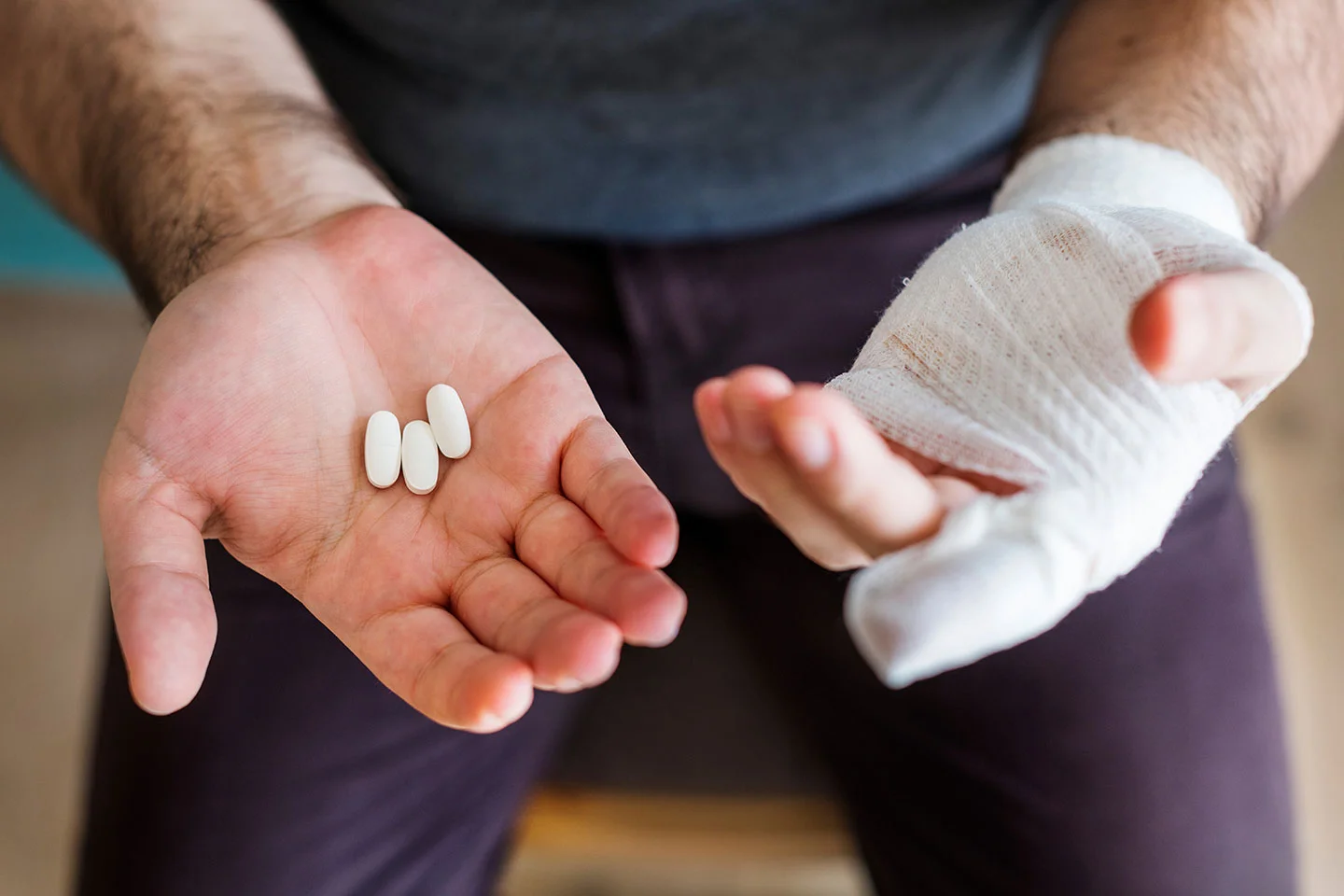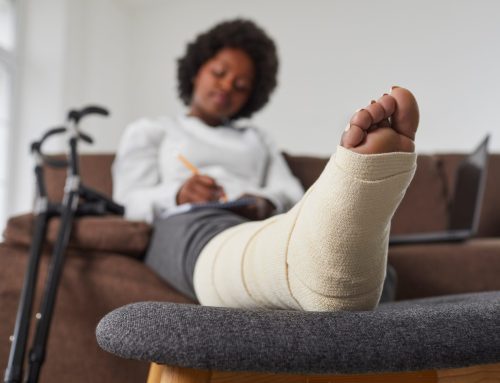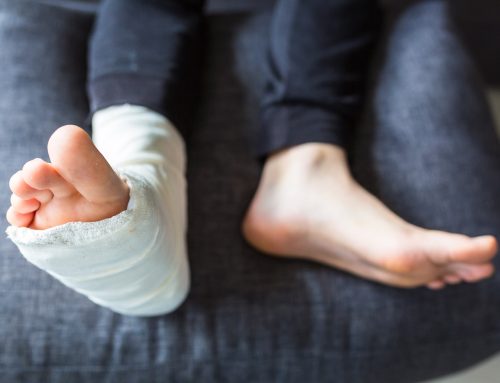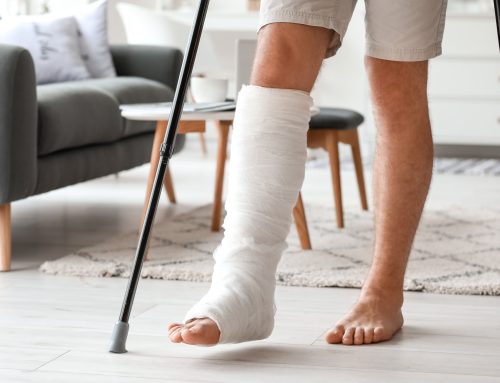Imagine this: you’ve just suffered a bone injury, and you’re in excruciating pain. The thought of relief sounds heavenly, but you’re also concerned about the best way to heal your injury. Should you take nonsteroidal anti-inflammatory drugs (NSAIDs) to reduce your pain, or will they cause more harm than good? The answer, as it turns out, isn’t black and white.
In this blog, we’ll delve into the world of NSAIDs and their effects on bone healing. We’ll cover the pros and cons of taking NSAIDs when recovering from a bone injury, and provide you with the information you need to make the best decision for your health.

Pros of NSAIDs for Bone Injury Healing
As we venture into the pros and cons of NSAIDs, it's essential to understand how these medications can potentially aid in fracture recovery. Let's dive into some of the notable benefits that may make NSAIDs an appealing choice for managing pain associated with bone injuries.
Pain Relief
The most significant benefit of NSAIDs is their ability to alleviate pain. These medications work by blocking the production of chemicals responsible for inflammation and pain. By reducing inflammation and dulling pain signals, NSAIDs can make the healing process more bearable, especially in the initial stages of a bone injury.
Increased Mobility
Reduced pain can lead to increased mobility, making it easier for you to participate in physical therapy or complete daily tasks. This is particularly important during the recovery process, as gentle movement can help maintain muscle strength, prevent stiffness, and promote blood flow to the injured area. The downside is that you may be putting more stress on your injury since you don’t have the pain signal to let you know when you’re pushing too far, too early in your healing process.
Accessibility and Affordability
NSAIDs are widely available over-the-counter and are relatively inexpensive compared to other pain management options. This makes them an accessible choice for many individuals dealing with bone injury.
Cons of NSAIDs for Bone Injury Healing
While NSAIDs offer some enticing advantages, it's crucial to examine the potential drawbacks that come with their use. Let's dive into the reasons why NSAIDs might not be the best choice for every individual recovering from a bone injury.
Delayed Bone Healing
While NSAIDs can certainly provide short-term relief, research has shown that these drugs may negatively impact long-term bone healing. Prostaglandins, the chemicals that NSAIDs block, play a crucial role in the bone repair process. By inhibiting prostaglandin production, NSAIDs can interfere with the early stages of fracture healing, potentially leading to a slower recovery or even nonunion (failure of the bone to heal).
Gastrointestinal Issues
Long-term use of NSAIDs can increase the risk of gastrointestinal complications, such as ulcers, bleeding, and perforation. These side effects can be particularly concerning for individuals who are already at an elevated risk of gastrointestinal issues, like those with a history of ulcers or who are taking corticosteroids.
Kidney Damage
The use of NSAIDs has been linked to an increased risk of kidney damage. This is because NSAIDs can cause a decrease in blood flow to the kidneys, impairing their function. While the risk is relatively low for most people, individuals with pre-existing kidney disease or those taking other medications that affect kidney function should be cautious when using NSAIDs.
Cardiovascular Risks
Some studies have suggested that long-term use of NSAIDs can increase the risk of cardiovascular issues, such as heart attack or stroke. This is especially relevant for individuals with pre-existing heart conditions or risk factors for cardiovascular disease.
Making an Informed Decision
Now that we've explored the pros and cons of taking NSAIDs when healing a bone injury, what's the best course of action? The answer depends on your unique circumstances and the severity and type of your injury.
For some individuals, the benefits of NSAIDs may outweigh the risks, particularly in the initial stages of recovery. In these cases, short-term use of NSAIDs can provide much-needed pain relief and improve mobility. However, it's important to discuss your specific situation with your doctor and follow their recommendations on the appropriate use of these medications.
For others, the potential negative effects of NSAIDs on bone healing and overall health may be too great. In these instances, alternative pain management strategies should be considered. Options may include:
Paracetamol (acetaminophen): This over-the-counter pain reliever does not have the same negative impact on bone healing as NSAIDs and is generally considered safer for long-term use. However, it may not be as effective in reducing inflammation.
Opioid pain relievers: For severe pain, your healthcare provider may prescribe short-term use of opioids. While these medications can provide significant pain relief, they come with their own set of risks, such as dependency and side effects. Therefore, their use should be closely monitored and limited.
Physical therapy: A physical therapist can develop a tailored exercise plan to help manage pain and improve mobility during the healing process.
Ice and elevation: Applying ice to the injured area and keeping it elevated can help reduce inflammation and provide pain relief.
Low-Intensity Pulsed Ultrasound (LIPUS): This non-invasive treatment has been shown to stimulate the natural bone healing process by promoting cell growth and enhancing blood circulation to the injured area. Incorporating LIPUS into your pain management plan can complement other strategies, helping to optimize the healing process and get you back on your feet faster.
The decision to take NSAIDs when healing a bone injury is not a simple one. Weighing the pros and cons is crucial to making an informed choice that supports your overall health and well-being. Always consult with your healthcare provider before starting any new medication or therapy to ensure that it's the best course of action for your specific needs. With the right pain management plan in place, you'll be on your way to a smoother recovery and a future free of bone-related pain.
If you want a pain-and-medication-free option at your fingertips, contact Fracture Healing to find out more about LIPUS technology and how it can help accelerate your healing today.






Leave A Comment